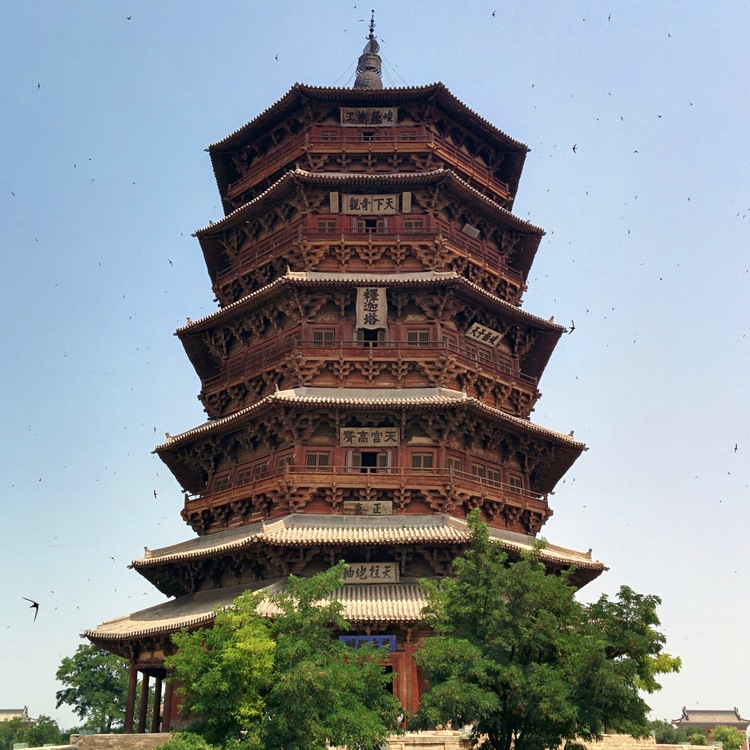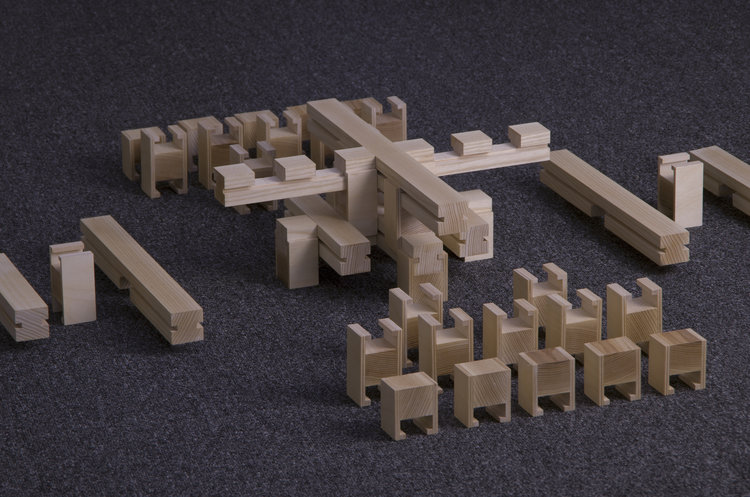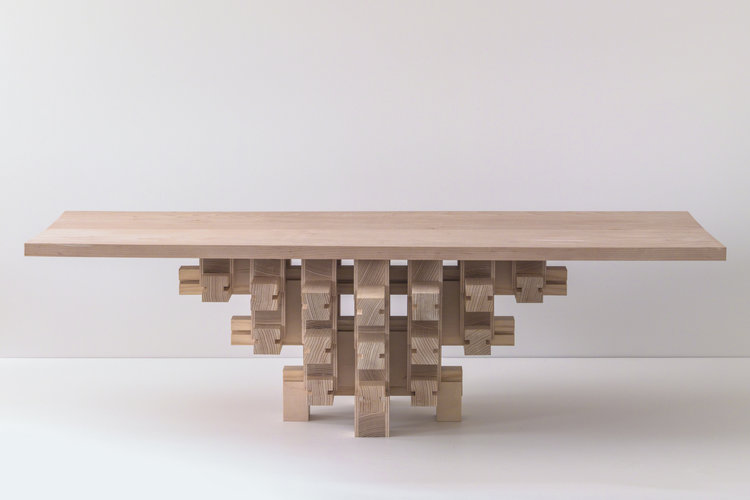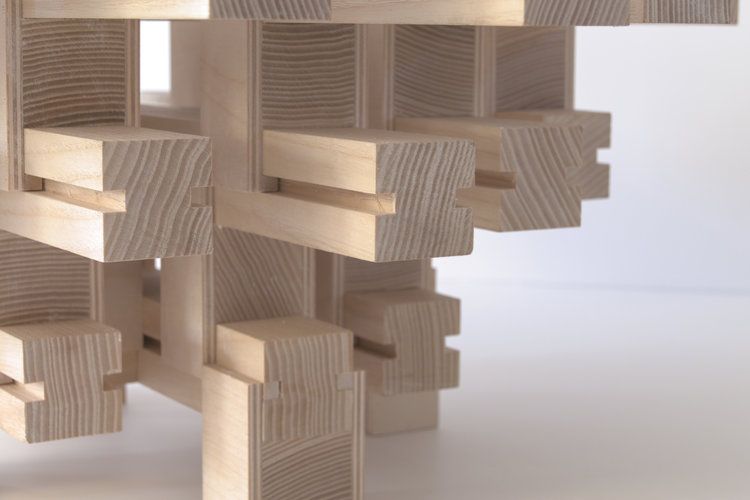Gridded Plywood Table Takes Inspiration from Chinese Pagodas
A unique interlocking system of wooden blocks called “dougong,” invented in the late centuries B.C.E., is one of the most important structural elements in traditional Chinese architecture. Capable of sticking together by way of joinery alone, without the need for glue, nails, or screws, this network of wooden supports is single-handedly responsible for the complex shapes we see in pagodas and other structures. We can get a particularly good view of the way dougongs interlock in the corners of buildings, where they become decorative elements, as seen in the Sagami Temple in Japan.

Boston-based industrial designer and multimedia artist Mian Wei recognizes both the beauty and strength of the dougong with “Grid Table,” a project he started in China in 2015 and completed in 2018 in Massachusetts. Noting how these grids are able to distribute weight and bind together the roof and pillars of a timber frame structure, he figured they would also serve as a beautiful support system for furniture.

It’s not unusual for contemporary architects to draw inspiration from traditional dougongs and reinterpret them in their own ways, says Mian, but in an effort to modernize the appearance of the system, they often end up oversimplifying it, resulting in overall weaker structures. The designer wanted to pay tribute to the innovative system and reinsert it into modern life without losing any of its inherent benefits. The ability for anyone with any skill level to easily put it together was also an important consideration.
“The project started when I was on an architectural road trip across China,” says Mian. “There are a large amount of ancient wooden architectural relics scattered across central-northern China, particularly in the Shanxi province, where I spent the most time. These buildings withstood the test of time and are still standing today. A few of them became prized tourist attractions, but most of them remain quietly in the mountains and villages that are mostly unknown to the fast developing outside world. The wooden structure Dougong (Dou Gong) plays an important role in the historical development of Chinese architecture.”

“Dougong serves primarily as a structural element in [the] architecture [of] early dynasties, used to distribute weight evenly across large architectural volumes. In later dynasties, Dougong gradually turned into a decorative element of architecture and served mainly aesthetic purposes. This project, on the one hand, tries to go back to the root to reinvestigate the practicality and scalability, and bring new life to the ancient tradition. On the other hand, the project seeks to explore new aesthetic possibilities [for] the structure with modern forms and production techniques.”
The supporting structure of the table is made of modular parts that can easily be disassembled and reassembled when needed for moving or storage. The beams (dou) slide together with the bracket connectors (gong) so precisely, the system is a bit like a puzzle, staying together when you lift the table despite the fact that no glue or fasteners were used in its construction.


Made of ash, maple, and plywood, the Grid Table has already gone on to receive a Silver A’Design Award.




